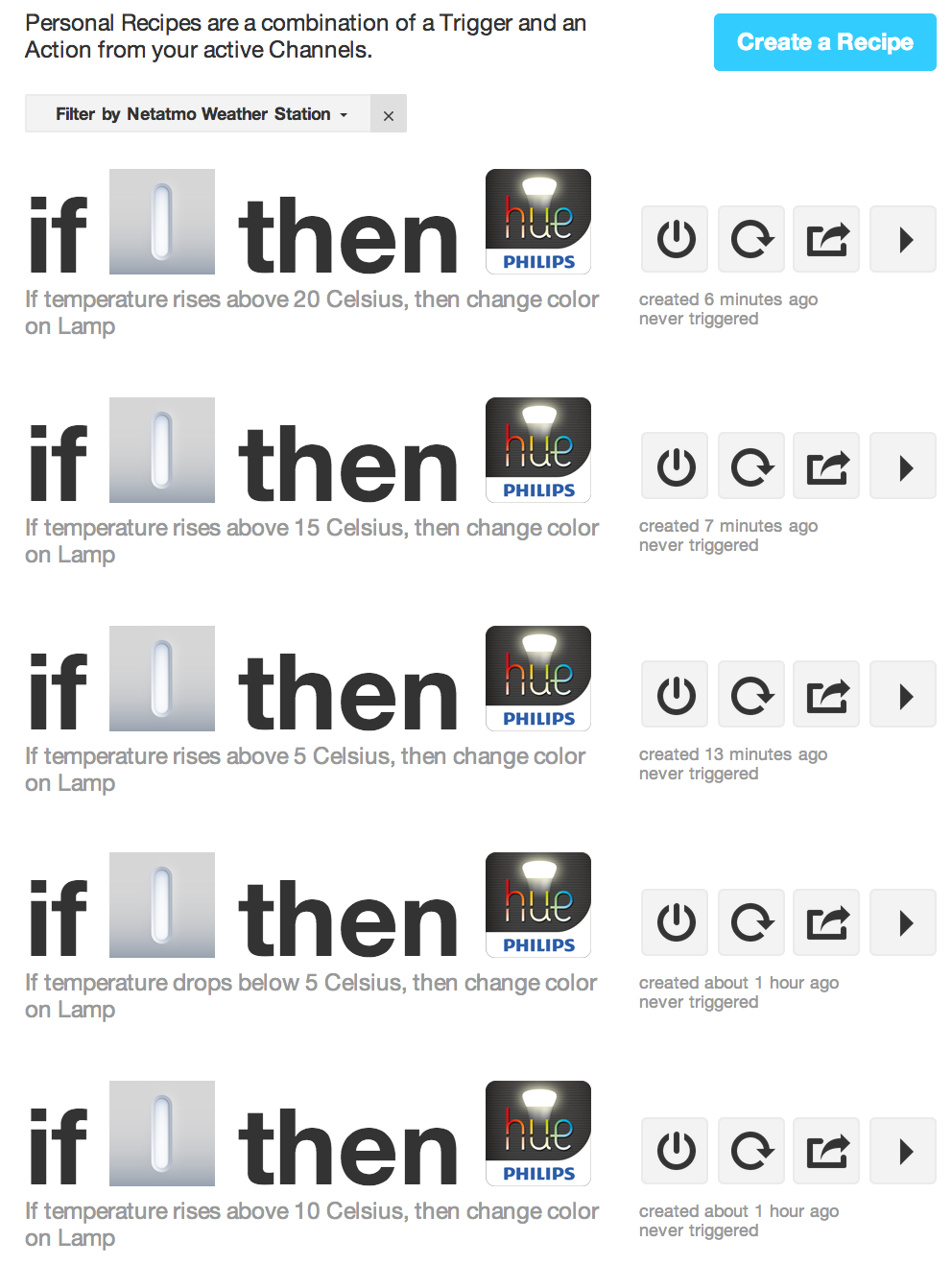IFTTT, Netatmo & Philips Hue: Linking Data to Lighting
Here at The Bartlett Centre for Advanced Spatial Analysis we run a simple dashboard view of the weather in London. The background of the dashboard changes colour to a variety of pantone shades according to temperature. Via our CEDE project we are starting to experiment with the Philips Hue Wifi Lighting System. With the ability to connect the bulbs to a network and select colours according to a hex colour – the logical link was to link the bulbs to the weather data, allowing the lighting to change according to the external temperature and in sync with the web dashboard.

Philips Hue
Once the bulbs are connected to the network there are a variety of third party services that can be used to control the bulbs, either as a group or individually. One of our current favourites here at CASA is IF This Then That (IFTTT), IFTTT is a service that allows the creation of simple ‘recipes’, linking popular online systems via a series of rules. Among the services linked on IFTTT is the Netatmo Weather Station and the Philips Hue.

Netatmo Weather Station
We are using the Netatmo in CASA as part of our forthcoming office data dashboard, it monitors internal temperature, humidity, sound levels and carbon dioxide with an external unit providing temperature and humidity readings.
Colour Range

If This Then That Recipes
IFTTT is an emerging service, as such it does have a number of limitations. We had to create a recipe for each temperature change, rather than combining it into one logical statement. IFTTT also only checks the readings from external services every 15 minutes, making it unsuitable for rapidly changing data. Finally, there do seem to be a few bugs, the hex colour does not seem to create a direct match to the Hue light, so a few tweaks are required to gain the correct colour output.

Ships Lamp Coloured by Temperature and IFTTT
Despite a few limitations it does open up a number of possibilities, the next steps are to look into how to link in other data feeds. This is arguably where the power of IFTTT comes into play, its ability to link a number of services and then control external hardware makes it a perfect opening into linking data to the Internet of Things.
The whole system could arguably be built using an Arduino board / Raspberry Pi linked to LED’s at a much lower cost. The linking of consumer grade units to data is however perhaps a step towards smart objects for everyone. The whole set up took under two hours to get up and running, including the setting up of the IFTTT recipes and linking to the Philips Hue. Edit (20/2/2014) – the light is now installed inside an old Ships Lamp with the colour changing according to the outside temperature.
It is probably a niche market, but the linking of data to lighting is an intriguing development. From making the lights blink when carbon dioxide levels in the office rise through to changing colours according to a twitter or rss feed, we are excited by the possibilities.
The web based weather dashboard can be viewed at http://www.casa.ucl.ac.uk/weather/colours.html data updates every 3 seconds. We will be mounting the ‘weather bulb’ in a small globe and placing it in the corner of the office. The Philips Hue starter pack comes with three bulbs, 50 lights can be linked to each bridge. With the ability to link each bulb, or a group of bulbs, to almost any data feed, the office is about to become a colourful place…
